This travel wiki page of Sri Lanka will help guide travelers with quick and relevant information to consider when planning and visiting the country. It is difficult to find all the relevant information on Sri Lanka’s culture, safety, travel restrictions, and things to do, so we summarize it all here. If anything is stale or outdated, please let us know! Let’s dive in and explore more high-level information as a Sri Lanka trip planner.
Last updated June 6th of 2023.
Table of contents
National Information & Culture
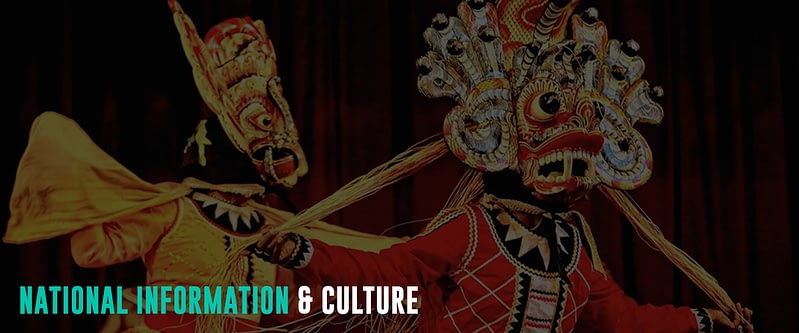
Sri Lanka, formerly known as Ceylon, is officially the Democratic Socialist Republic of Sri Lanka. It is a tropical island country in South Asia that shares maritime borders with the Maldives in the southwest and India in the northwest. While Sri Jayewardenepura serves as the administrative capital, Colombo is the commercial, judicial, and executive capital of Sri Lanka. Moreover, the country’s official currency is the Sri Lankan Rupee (LKR).
Sri Lanka’s cultural heritage and rich history span over 2,500 years. The island nation is home to magnificent ancient cities, temples, sacred sites, and architectural wonders. The country also boasts a coastline of over 1,600 kilometers, offering endless opportunities for sun-soaked relaxation and exciting water-based activities such as snorkeling, surfing, and whale watching.
While Sri Lanka is a land of incredible beauty and hospitality, there are a few norms and traditions every visitor must know. For instance, removing your shoes when entering religious sites and some homes is customary. Dressing modestly, especially when visiting temples or rural areas, is appreciated.
It is also essential to be mindful of conservative values and traditions, especially in smaller towns and rural communities. Sri Lanka’s society is traditional, and many judge ladies by their clothing styles. For most of them, short skirts and tight-fitting tops are unacceptable and considered to be worn by someone with loose morals.
Visit Sri Lanka’s Official Tourism Website for more information and tips when planning your trip.
Special Travel Considerations
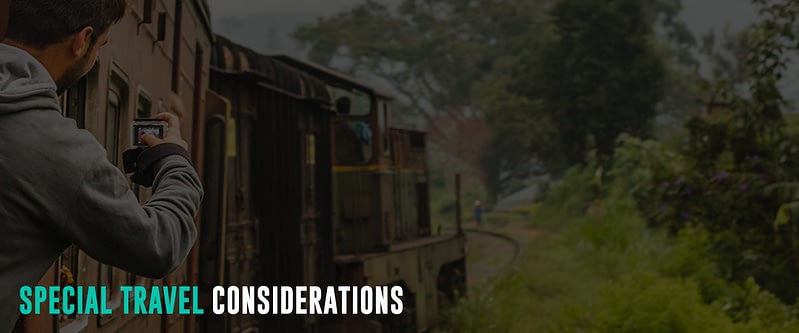
Each country and destination has rules and regulations that every traveler must consider. Hence, check the following considerations for hassle-free travel to Sri Lanka.
Covid-19 Policy
As of December 7, 2022, Sri Lanka does not have Covid-19 vaccination, testing, or quarantine requirements for travelers entering the country. However, the Covid-19 policy of Sri Lanka may vary over time with the evolution of the pandemic. Hence, monitor the latest Covid-19 entry requirements when planning your trip.
Travel Insurance
Travel and health insurance are not mandatory for visitors to enter Sri Lanka. However, it is advisable to have one that covers emergency medical treatment, including Covid-19, repatriation, and evacuation. Travel insurance can protect you against the inconvenience of injury, medical emergencies, theft, and flight cancellations. In addition, it is comprehensive protection in case anything goes wrong with your trip.
Yellow Fever Vaccine
Travelers from 46 African and South American countries must show a yellow fever vaccination certificate to the immigration and emigration counter at the airport. Guests without one will not be allowed to enter the country.
Visa Information
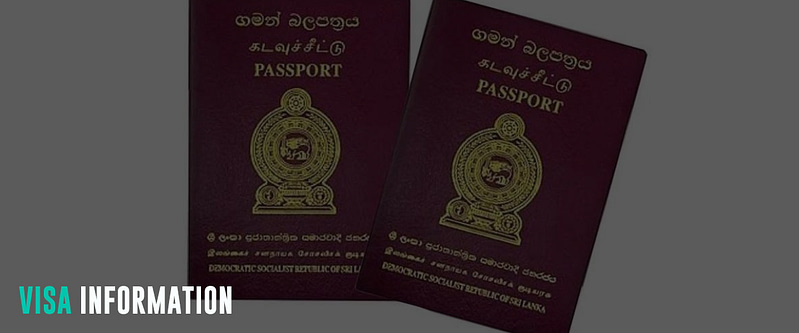
All foreign visitors must apply for a visa or electronic travel authorization (ETA) to enter Sri Lanka, except for Singapore, Maldives, and Seychelles citizens who can avail of a gratis visa on arrival. Meanwhile, nationals from 10 countries cannot apply for an ETA and must obtain a visa from the nearest Sri Lanka Embassy or Diplomatic Missions.
ETA applications can be made through the Electronic Travel Authorization (ETA) of the Department of Immigration & Emigration official website, subject to fees ranging between $20 and $50.
Visitors must present the ETA approval at the port of entry in Sri Lanka in exchange for a 30-day Short Visit visa. In addition, travelers must have at least six months valid passport, a return or onward ticket, and sufficient funds to cover the costs.
Popular Attractions
Sri Lanka offers many tourist attractions, including natural wonders, historical sites, cultural landmarks, and beautiful landscapes. Moreover, it has endless coastlines and beaches, timeless ruins, and abundant wildlife, including herds of elephants. Here are some of the top tourist attractions in Sri Lanka:
Yala National Park
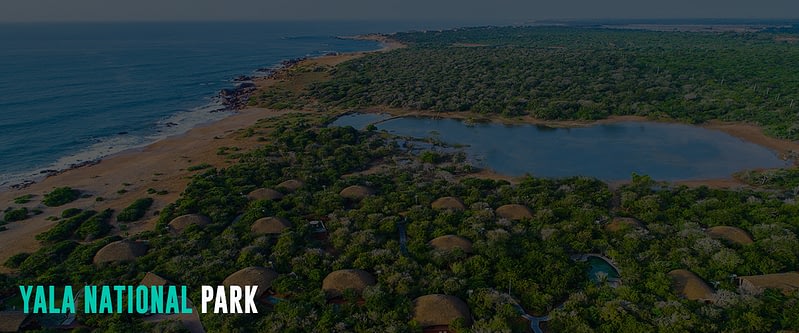
Yala National Park in southeast Sri Lanka is a vast area of forests, savanna, and lagoons bordering the Indian Ocean. It combines a strict nature reserve with a national park, divided into five blocks. Two blocks are open to the public. The park was initially used as a hunting ground during British rule. But in 1900, it was designated a wildlife sanctuary and a national park in 1938.
Yala is a popular safari destination for its diverse wildlife, including the world’s largest concentration of leopards, elephants, sloth bears, crocodiles, and various bird species. Yala hosts multiple ecosystems, ranging from monsoon forests to wetlands, making it an Important Bird Area with 215 bird species. The best time to visit is between February and July. The park also encompasses other national parks and wildlife sanctuaries, such as Lunugamvehera National Park. In addition to wildlife, Yala is home to historic pilgrimage sites, including Sithulpahuwa and Magul Vihara temples.
The park offers spellbinding landscapes, a wide variety of wildlife, and informative displays at the visitor center. Safari tours allow visitors to explore the park and observe its natural beauty.
Sigiriya Ancient Rock Fortress

Sigiriya Rock Fortress, near Dambulla in Sri Lanka, is an ancient rock formation with a mountaintop palace during the 4th and 5th centuries. The rock walls rise 200 meters high and feature giant frescoes and a lion-shaped gateway. The ruins on top of the rock include a palace and monastery. The site is recognized for its impressive urban planning and landscaped gardens, considered some of the world’s first. As a result, Sigiriya was listed as a UNESCO World Heritage Site in 1982.
Visitors can reach Sigiriya from Colombo, and buses and tuk-tuks are available for transportation. Hiring a guide for a better understanding of the site is recommended. It is essential to bring water as the climb can be long and tiring. Starting early in the day is advisable to avoid the heat, and sun protection is recommended.
Galle Fort
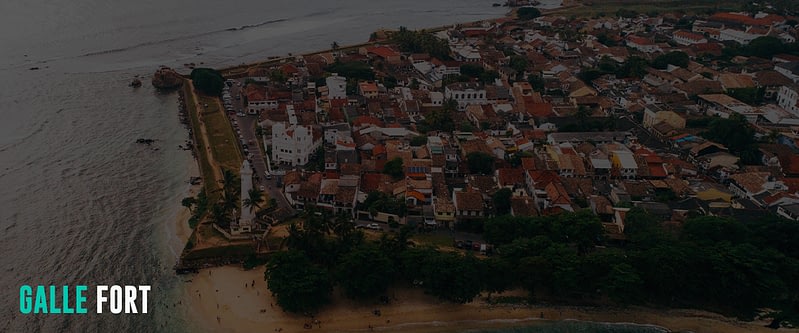
Galle Fort is a UNESCO World Heritage Site on a peninsula on Sri Lanka’s southwest coast. It features well-preserved colonial architecture, charming streets, boutique shops, and art galleries. The fort has a rich history shaped by the Portuguese, Dutch, and British.
The fortified old city provides a charming and peaceful atmosphere, bringing visitors back European colonial era. Galle’s historical significance as a trading port is evident in its well-preserved architecture, characterized by white and pastel-yellow villas with red-tile roofs. This enchanting destination showcases the fusion of European architectural styles and South Asian traditions, making it a fascinating place to explore and experience Sri Lanka’s cultural heritage.
Within the well-preserved fortress, visitors can explore various attractions, such as the National Museum and the National Maritime Archaeology Museum, which offer displays of artifacts and provide insights into the region’s cultural heritage. The fort has notable landmarks, including the Galle Fort Clock Tower and a lighthouse overlooking a small beach. Walking along the fort’s ramparts offers stunning views of the surrounding water and the city. Shopping lovers can indulge in the vibrant streets of Galle, with its art galleries, upscale markets, and boutique stores offering a wide range of clothing, jewelry, souvenirs, and home goods.
Udawalawe National Park
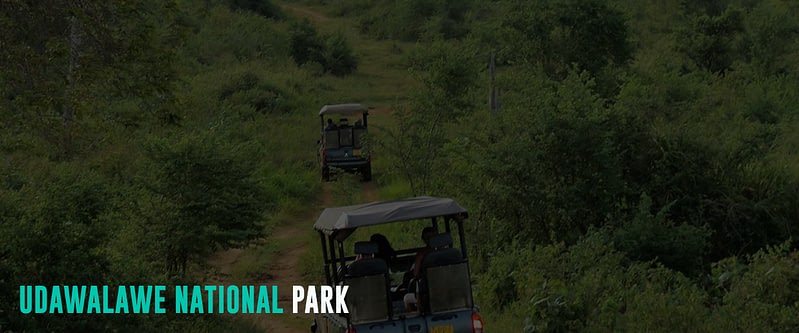
Udawalawe National Park is famous for its abundant wild elephants and is considered one of Sri Lanka’s best national parks for wildlife viewing. The park covers less than 120 square miles and offers frequent wildlife sightings in a natural setting. Aside from elephants, other animals in the park include peacocks, jackals, water buffalo, crocodiles, monkeys, deer, water monitor lizards, sloth bears, and occasional leopards. Its diverse landscape has mountains to the north, wetlands, and rivers surrounding grasslands and forests.
Udawalawe National Park is also a haven for waterfowl, making it an excellent destination for bird-watching. The park’s diverse avian population includes 210 species, with migratory birds joining the resident birds between November and April. The park is less than three hours from Colombo and about an hour from the Hambantota resorts.
While Udawalawe offers exceptional wildlife safari experiences, it can get crowded, particularly with everyone eager to see the elephants. To optimize the safari experience, visitors should communicate their interest to the driver and guide. At the same time, respecting the animals and avoiding overcrowding at sightings is essential. As per the guideline, no more than five vehicles should be at a time. Remember to tip the guides and drivers for their services.
Dambulla Cave Temple
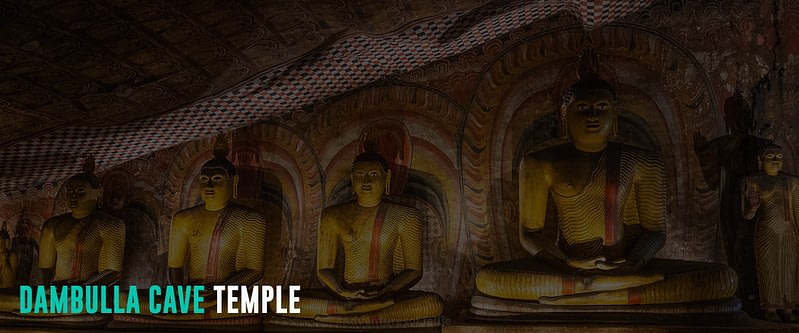
The Dambulla Cave Temple, aka the Golden Temple of Dambulla, is a sacred Buddhist and UNESCO World Heritage Site. Dambulla is famous for being the most extensive and best-preserved cave temple complex in Sri Lanka. Its temple complex, dating back to the first century BCE, consists of five caves. They are adorned with religious images, including depictions of Buddha, bodhisattvas, and various gods and goddesses.
The cave walls feature impressive statues and beautiful murals, which have been preserved and conserved. At the mountain’s base is a prominent golden Buddha statue, contributing to the temple’s alternate name, the Golden Temple of Dambulla.
Visitors can access and climb the temple through multiple entrances. The temple is busy on full-moon days when free entry attracts devotees worldwide. Visitors should ensure that their shoulders and legs are covered and shoes are removed before entering the temple. The temple is around a two-hour drive from Colombo.
Sacred City of Kandy
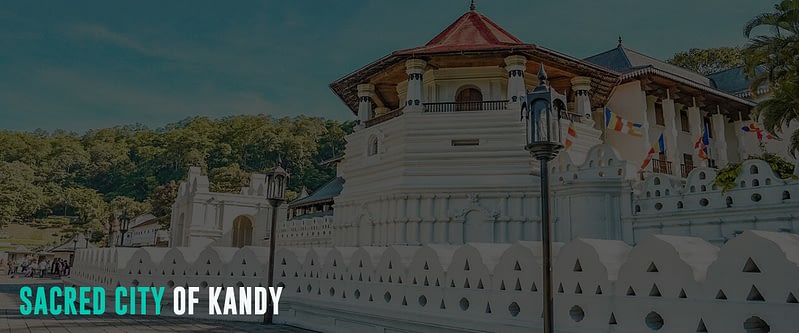
Kandy, located in central Sri Lanka, is a vibrant city surrounded by mountains, tea plantations, and lush rainforests. It served as the last capital of the Sinhala kings, fostering the flourishing of the Dinahala culture for over 2,500 years until British occupation in 1815. The city is famous for its picturesque Kandy Lake and is a popular administrative and religious destination. It is also home to the Temple of the Tooth Relic, a highly revered Buddhist shrine and a UNESCO World Heritage Site.
As a major tourist destination, Kandy offers a range of attractions and activities. Visitors can explore the National Museum of Kandy. They can also wander through the colorful streets, sampling delicious food from street vendors and admiring the unique architecture. Walking around the scenic lake provides breathtaking views of the surrounding hills and vibrant buildings. Moreover, the city of Kandy features colonial-era and Kandyan architecture.
A short drive outside the city leads to the Peradeniya Royal Botanical Gardens, where visitors can explore the orchid house and spice garden, immersing themselves in the country’s native spices.
Sacred City of Anuradhapura
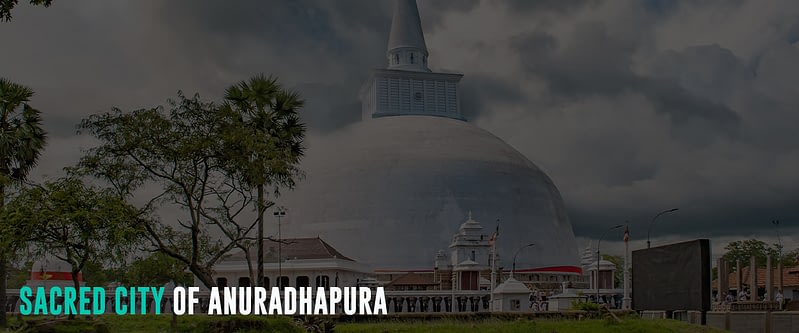
Anuradhapura in the North Central Province of Sri Lanka is home to remarkable ruins among South Asia’s most captivating sights. As one of the three corners of Sri Lanka’s Cultural Triangle, Anuradhapura holds immense historical and religious significance. It was the country’s first ancient capital and thrived for over 1,300 years before its abandonment in 993. Visitors flock to this UNESCO World Heritage Site to marvel at its well-preserved ruins and delve into its profound Buddhist history. The complex boasts several dagobas, ancient pools, crumbling temples, and dome-shaped memorials, with one believed to enshrine Buddha’s collarbone. Many of these sites remain holy places and temples, adding a vibrant atmosphere to Anuradhapura.
Another important site is the Bodhi tree in the Mahamewna Gardens. It is the oldest known human-planted tree in the world, grown from a sacred fig tree in India, under which Gautama Buddha achieved enlightenment. Anuradhapura’s holy city was established around a cutting from the Buddha’s fig tree, brought to the area in the 3rd century BC by Sanghamitta, the founder of a Buddhist order of nuns. After being abandoned due to an invasion in 993, the magnificent site, with its palaces, monasteries, and monuments, remained hidden in the dense jungle for many years.
Today, it is again accessible, allowing visitors to witness its splendor. Present-day Anuradhapura is a sprawling city with a pleasant and relaxed ambiance, resembling a large village. Travelers can find plenty of affordable accommodations, bike rentals and enjoy a leisurely pace, making it an ideal place to spend an extra day.
Ancient City of Polonnaruwa
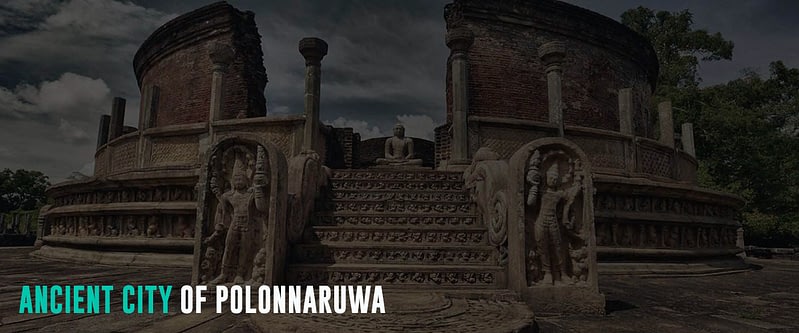
Polonnaruwa in the North Central Province of Sri Lanka was once the country’s second capital. It served as a significant city after the decline of Anuradhapura in the 10th century. A UNESCO World Heritage Site, the ruins of Polonnaruwa offer valuable insights into its glorious past, including the architectural marvels of its ancient structures. Visitors can easily reach Polonnaruwa by bus or tuk-tuk from Sigiriya and explore the city’s rich cultural heritage.
Polonnaruwa is often compared to Petra in terms of its historical significance. The city showcases the remnants of a bygone era, with towering columns standing as a testament to the architectural brilliance of ancient times. Travelers can tour the city’s ruins, including the royal palace, the quadrangle with its monuments and Buddha statues, and the dagobas (stupas). Watch for the toque macaques, a native and endangered monkey species frequently seen in the area.
Visiting Polonnaruwa offers a captivating experience, allowing tourists to delve into this ancient capital’s rich history and architectural wonders.
Colombo

While many tourists prioritize Sri Lanka’s natural destinations and overlook Colombo, the capital shouldn’t be underestimated. Colombo offers a blend of old and new. It has distinct neighborhoods showcasing ancient temples, colonial architecture, modern skyscrapers, and city parks. Exploring the city leisurely is highly recommended, allowing visitors to immerse themselves in its sights and atmosphere.
One architectural gem that stands out is the Jami Ul-Alfar Masjid, also known as the Red Mosque, in Colombo’s Pettah neighborhood. The mosque’s striking red and white exterior is captivating to behold. For a more immersive experience, visitors can venture inside. But keep in mind the appropriate dress code—women should cover their hair, arms, and legs.
Gangaramaya Temple in Central Colombo near Beira Lake is a 19th-century Buddhist temple complex that interestingly includes a vintage car museum. It has displays of 1930s Mercedes and a very rare Rolls-Royce Ghost from the 1920s. The temple is a religious museum with religious coins, jewelry, and sculpture collections.
Another must-visit attraction in Colombo is the National Museum of Natural History to learn about Sri Lanka’s physical, wildlife, and natural history. Travelers into arts must not skip Sri Lanka National Museum as well. The museum showcases cultural and natural exhibits. The displays include the collection of artifacts to artwork along with jewelry, coins, money, arms, and crafts.
Mirissa
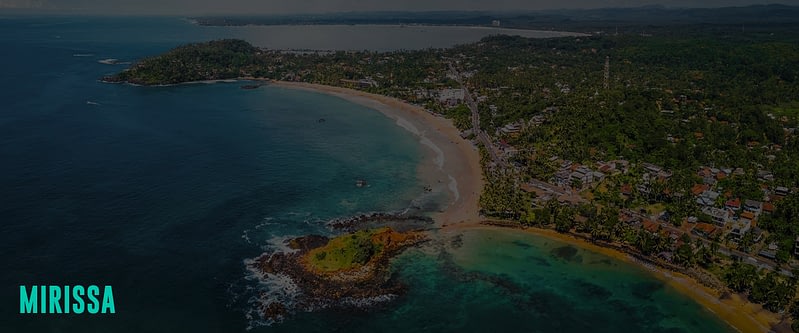
Mirissa is a popular beach destination in Sri Lanka for its beautiful long beachline with palm trees, modern restaurants, and hotels. Visitors to Mirissa can enjoy various day trips and activities such as whale watching, snorkeling, and surfing.
Mirissa Beach and Secret Beach are the most beautiful and secluded beaches. Mirissa is also renowned as a surfer’s paradise, especially from October to April, and a popular spot for whale watching, particularly for spotting humpback and blue whales. Dondra Point and Trincomalee are ideal locations for whale watching, while Kalpitiya offers abundant dolphin sightings.
Just off the beach is Parrot Rock, offering stunning ocean views from its top, accessible via a small staircase. Weligama, located nearby, is an excellent beach for learning to surf.
After a day in the sun, visitors can unwind at the casual and lively beachside restaurants and bars, perfect for enjoying a sunset cocktail.
The Sri Lanka Coast Guards monitor whale-watching activities in Mirissa to ensure safety and regulation compliance. They ensure boat operators, crew, and tourists adhere to safety precautions and regulations during whale-watching tours.
Adam’s Peak
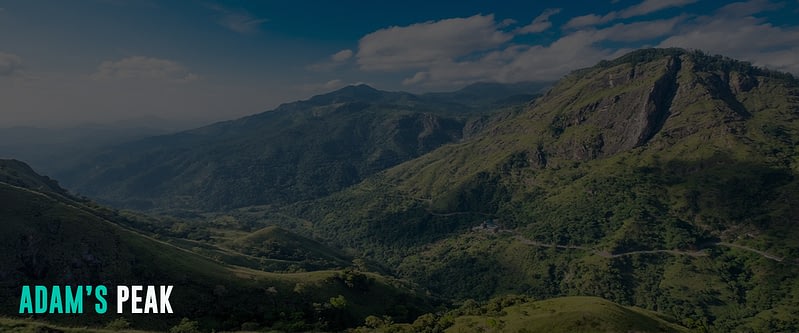
Adam’s Peak, known as Śrī Pāda, is a sacred conical mountain in central Sri Lanka. It stands at 2,243 meters and is famous for the “sacred footprint,” a significant 1.8-meter rock formation near the summit. The mountain holds religious importance for various faiths, with Buddhists believing it to be Buddha’s footprint, Hindus associating it with Shiva, and Christians and Muslims considering it Adam’s footprint.
Regardless of religious beliefs, Adam’s Peak is a stunning natural attraction worth visiting. Climbing the mountain is an exciting adventure, with over 5,000 steep staircases. Many hikers start their climb at night to witness the sunrise from the summit.
The mountain is accessible from Nallathanniya village, and the best time to climb is between December and May. Six trails lead to the summit, offering different journey times and difficulty levels. The paths have lighting at night, and families can enjoy the activity as it is suitable for children. Along the way, there are rest stops and food vendors available.
Upon reaching the summit, visitors will find a stone cast with a footprint. Currently, a Buddhist monastery resides at the top. Adam’s Peak is a popular pilgrimage site, particularly on full moon nights.
Nine Arch Bridge
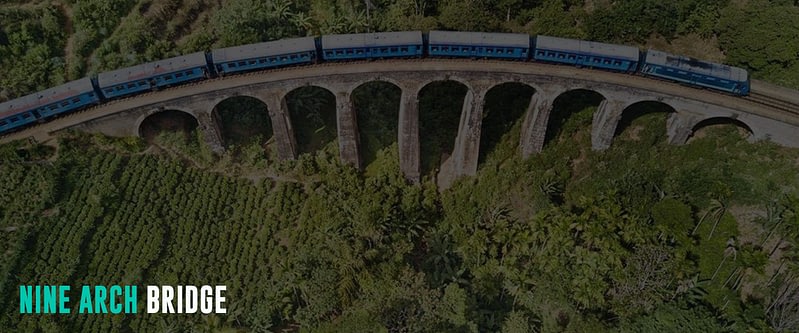
The Nine Arch Bridge in Ella is one of Sri Lanka’s iconic sights. It offers breathtaking views of the surrounding area’s lush greenery and tea fields. Built during the early days of Sri Lanka’s railway expansion, this bridge stands out for its unique construction using cement, stone, and brick, without any steel.
Visitors can witness trains passing over the bridge as they travel along the Demodara Loop. The bridge, an example of practical industrial design from the British colonial era, features nine arches spanning 300 feet. Local workers built it in collaboration with British engineers, and it still serves its purpose today, more than a century later.
To reach the Nine Arch Bridge, tourists can choose between two options. They can take a tuk-tuk from Ella or embark on a train journey traversing the bridge. The bridge is between the Ella and Demodara stations on the main train line. Train rides that pass over the bridge, particularly the journey from Kandy to Ella, are one of the top activities in Sri Lanka and offer one of the most breathtaking train experiences in the world.
For those visiting from Ella, it is possible to carefully walk across the bridge, making it a popular spot for capturing stunning Instagram photos due to its dramatic scenery.
Arugam Bay
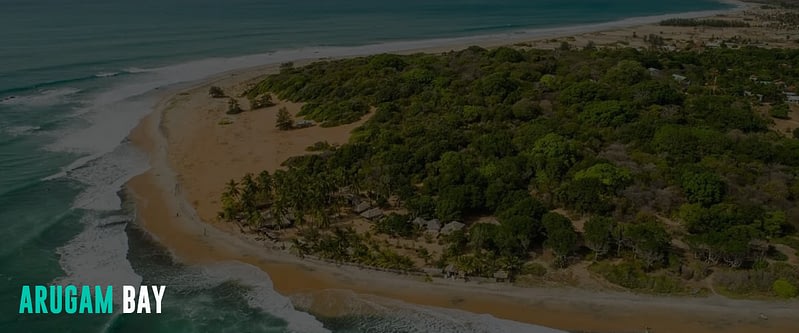
Arugam Bay, located on Sri Lanka’s east coast, offers a stunning coastline stretching over 1600 km, providing a picturesque setting for water-based activities and scenic views. The bay is a paradise for surfers, embodying the laid-back surf lifestyle. Advanced and intermediate surfers can enjoy the Main Point surf break within walking distance of the town center. Whiskey Point and Peanut Farm beaches are just a short tuk-tuk ride away for beginner and intermediate surfers. Visitors can find various restaurants offering traditional Sri Lankan cuisine and international dishes along the main strip of Arugam Bay town.
Apart from surfing, visitors can enjoy speed boating, paragliding, beachfront guesthouses, oceanside restaurants, and a laid-back vibe that differs from the bustling beach resorts on the west coast. Arugam Bay is also an excellent base for exploring the hinterland, offering various adventures. The low season from November to April provides a tranquil experience with fewer tourists and lush landscapes.
While fishing has traditionally been the dominant local industry, tourism has rapidly grown in recent years. Arugam Bay’s Tamil translation, “Bay of Cynodon dactylon,” reflects its natural beauty. Surf tourism thrives in the area due to its quality surf breaks. Tourists are also drawn to the local beaches, lagoons, historic temples, and the nearby Kumana National Park.
Primary Spoken Language(s)
Around 74% of the population in Sri Lanka speaks Sinhala, the country’s official and national language. Another national language is Tamil which is spoken by 18% of the country’s population. Moreover, English is a link language widely used in education, government, and business.
Safety Concerns
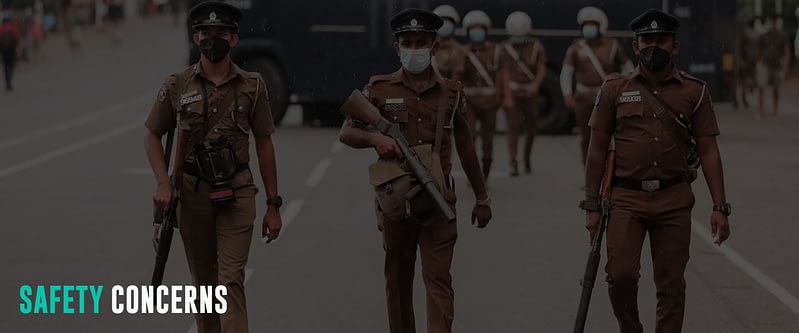
Sri Lanka is a relatively safe tourist country, ranking 90th out of 163 countries on the 2022 Global Peace Index. Also, Sri Lanka has a Level 2 Travel Advisory from the US Department of State. For this, travelers in Sri Lanka must take precautions when exploring the country.
The common concerns for tourists in Sri Lanka are petty crimes such as pickpockets and theft. Therefore, avoid bringing valuable items and large sums of money. Do not leave your belongings unattended; keep your bags or purse on hand.
Another tourist concern in Sri Lanka is scams. Beware of some taxi drivers suggesting a short stop at Spice Garden, where they offer tourists fake Ayurveda medicines and cosmetics. Also, note that most taxis in Sri Lanka do not have meters. Always negotiate and agree on the price before getting in.
The country has a history of terrorist threats, and travelers are advised not to go near demonstrations and big crowds.
In emergencies, dial 118/119 for police, 110 for ambulance/fire/rescue, 117 for disaster, and 1919 for government information centers.
Health
The common health concerns for tourists in Sri Lanka are bowel diseases such as diarrhea, amoebic dysentery, and fungal infections. Hence, visitors should drink only sealed bottled water with an SLS certification and eat hot, freshly cooked foods.
The risk of vector-borne diseases such as malaria and dengue fever exists throughout the country, apart from the districts of Colombo, Kalutara, and Nuwara Eliya. Therefore, travelers must consider prophylaxis and mosquito repellant. Consider visiting a medical expert for proper medication.
Additionally, travelers planning to stay longer or visiting remote places should have typhoid, polio, tetanus, hepatitis A, hepatitis B, and rabies vaccines. Lastly, sunblock must always be handy when exploring various destinations in Sri Lanka.
Local Laws
Certain places and destinations in Sri Lanka have photography and filming restrictions and prohibitions. Taking pictures beside or in front of Buddhist imagery, statues, and murals is forbidden. Also, flash photography can damage old murals. Get local advice before photographing places of worship.
Travelers who want to visit and photograph Sri Lanka’s principal ancient monuments must purchase a ticket or permit from the Central Cultural Fund offices. These ancient monuments include Anuradhapura, Polonnaruwa, Sigiriya, Nalanda, Ritigala, and Medirigiriya. Ticket prices for each site vary. However, tourists can get a single round ticket for all areas at $50, valid for two months.
In addition, visitors must also know that it is illegal to drink alcohol and smoke in public places.
Natural Hazard
Sri Lanka experiences two monsoon seasons yearly, between December and March in the northeast and May to October in the southwest. It can cause frequent flooding and landslides, so be open to changing travel plans and monitor local news sources for information. When planning your itinerary, check weather reports, landslides, and flood warnings from the Ministry of Defense – Disaster Management Center website.
Budget Considerations
Sri Lanka is a budget-friendly destination for all types of travelers. However, expect higher accommodation rates during the peak seasons between December and April.
Accommodation
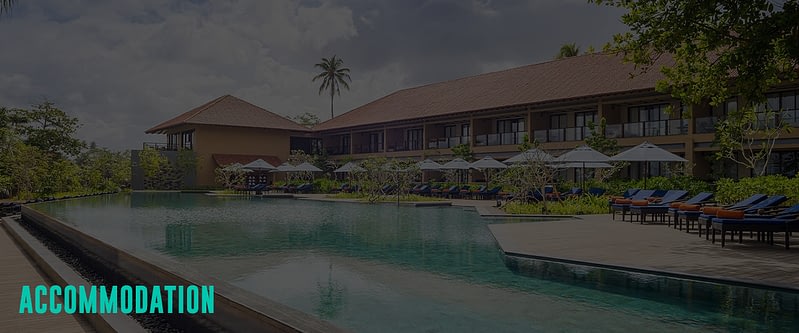
Hostels are widely available in Sri Lanka for as low as $7 per night for a dorm bed and $16 for privates. There are also many budget hotels, ranging between $24 and $30. In addition, travelers can find a private room for $19 or an entire apartment between $29 and $45 per night from Airbnb.
Another cheaper option for travelers is staying between $15-20 per night on homestays. Through homestays, tourists are not only supporting community-run tourist accommodations, but it is also one way to immerse in the local culture.
Depending on the location, travelers can enjoy the comfort of a three-star hotel for $35 per night. And for as low as $60, travelers can also splash out on their stay at five-star hotels.
Free wifi is standard in almost all types of accommodation, and most offer complimentary breakfast.
Food
Sri Lankan cuisines are flavorful and tasty. Traditional dishes center on rice, coconut, curry, herbs, and spices. And because of its tropical island location, seafood, fruits, and vegetables are abundant in Sri Lanka. Some of the famous must-try dishes include kottu roti, fish ambul thiyal (sour fish curry), kukul mas curry (chicken curry), parippu (dhal curry), lamprais, and hoppers.
Street foods typically cost between $1 and $3. Expect to pay at least $2 to $4 per meal in local Sri Lankan restaurants. Travelers can also dine in fast-food chains for around $4 for a combo meal. Western cuisines typically cost $15 in a mid-range restaurant and about $25 in high-end places.
Because most accommodations have complimentary breakfasts and Sri Lanka typically has cheap foods, travelers do not need to go grocery shopping and cook food.
Attractions and Transportation
There are a variety of attractions and activities in Sri Lanka. Travelers can visit ancient monuments between $5 to $25 admission fees or get a single round ticket for all sites at $50, valid for two months. They can also take surfing lessons for $8 per hour, scuba diving at $55 for two dives, or join whale-watching tours for $50. And with the abundance of wildlife, travelers to Sri Lanka will enjoy an elephant safari at Udawalawe National Park for $75 or a Full-day safari at Yala National Park for $140.
For backpackers and budget travelers, public transportation in Sri Lanka is accessible and affordable. Taxis are widely available in central cities, while Tuk Tuk is almost everywhere. Both don’t have meters, and tourists need good bargaining skills for a fair price. Expect to pay $20 for hiring a TukTuk with a driver who will take you around places for a whole day. For reliable and fair-priced rides, travelers can use the PickMe app to hire taxis and TukTuk services in Sri Lanka.
Buses and train rides are the cheapest options to travel between towns and cities. Pay as little as $0.20 for a short bus journey in town or as low as $2 for second-class train rides.
Average Two-Week Cost
Backpackers to Sri Lanka can live with a $35 daily budget or $490 for two weeks. The budget covers the costs of sleeping in hostel dorm beds; dining in either hawker food stalls or local restaurants; taking public transport; visiting free attractions, and mainly doing free or cheap activities.
Average travelers to Sri Lanka spend at least $75 daily, or $1050, for two weeks. The cost includes staying in at least three-star hotels, taking occasional taxis, dining in local restaurants with occasional Western meals, and joining a few paid tours and activities.
On the other hand, travelers can enjoy luxury in Sri Lanka from $140 daily or $1960 for two weeks. It includes staying in at least four-star hotels, splashing out on meals, taking domestic flights and car rentals, and availing of all the activities and tours they want. So for them, the sky is the limit for travel.
Customs And Import Restrictions
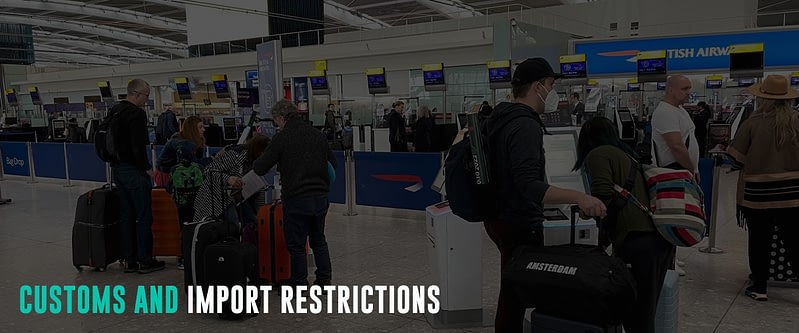
Sri Lanka Customs exempt visitors from customs duties on personal clothing, gifts, and other essentials up to $250. They can also bring two regular-size bottles of wine and one and a half liters of spirits or liquor. Moreover, visitors can import and must declare personal equipment, such as cameras and laptop computers, upon arrival. However, visitors must bring back such personal equipment upon leaving Sri Lanka.
On the other hand, Sri Lanka Customs restrict entries of the following goods and products:
- Gold, jewelry, gems, and other precious metals
- Liquor and wines
- Cosmetics, medicinal drugs, and devices
- Telecommunication equipment
- Foreign currencies of more than $10,000 or their equivalent
- Animals, plants, and their by-products
- Firearms, ammunition, air guns, and explosives
- Any other items which require special permits or licenses
The country also prohibits the entry of the following items:
- Narcotics, psychotropic substances, precursor drugs, pornographic and pro-religious literature
- Cigarettes
- Non-prescription drugs
Visit the Sri Lanka Customs website and check out the complete list of travelers’ baggage exemptions and the table of prohibitions and restrictions when planning your trip.
Climate Considerations
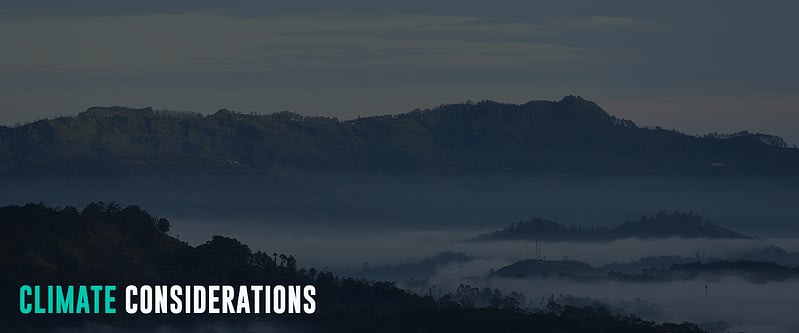
Sri Lanka has a tropical and warm climate with wet and dry seasons because of the effects of ocean winds. The southern and western areas have wet seasons affected by the Yala monsoon from May to September, with dry seasons from December to March. On the other hand, the Maha monsoon brings wind and rain to the northern and eastern coastal regions from October to January.
The country’s average temperatures range from 17 °C in the highlands to 33 °C in low-altitude areas. While the annual average daytime temperature is 28 °C, it can drop to 14 °C at night.
Primary Transportation Options
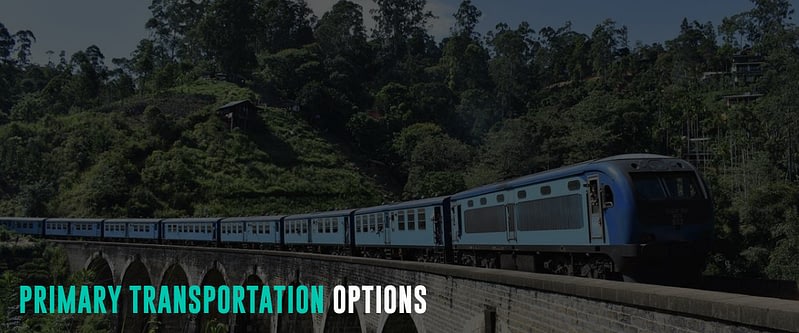
Transportation to and around Sri Lanka is focused on air, rail, and road services. But because the country has narrow roads, getting around Sri Lanka can be time-consuming.
Air
Sri Lanka has five international airports and eight domestic airports nationwide. Most visitors to Sri Lanka arrive at the Bandaranaike International Airport, the country’s leading aviation hub. Sri Lankan Airlines, the country’s flag carrier, serves these airports. Other local airline operators in Sri Lanka are Helitours, Cinnamon Air, and FitsAir.
Aside from the regularly scheduled domestic flights, charter, and helicopter tours are also available in Sri Lanka.
Train
Traveling by train is one of the best ways to explore the many attractions in Sri Lanka. Must-try are the scenic routes of Kandy to Ella and Colombo to Galle. Moreover, the rail system in Sri Lanka connects most towns and provinces, so travelers will likely take it often.
Travelers can choose to ride in first class (air-conditioned and reserved seats), second class (cushioned seats and non-aircon), and third class (benches and non-air). Train reservations are open 30 days before departure for as low as $1 for a single train ticket.
More popular train routes sell out quickly. So, check the Sri Lanka Railways portal to book seats at least a day or two before the travel date. Lastly, note that train schedules are usually not on time.
Bus
Traveling by bus is the cheapest and primary mode of transport in Sri Lanka. There is a network of bus routes everywhere, even the remote areas. Bus tickets are also affordable, for as low as $0.20 for a short journey in the city. However, buses in Sri Lanka can be more crowded, especially during rush hour.
Taxi
Taxis in Sri Lanka have yellow tops with red and white plates. They are available in big cities and towns. However, taxis in Sri Lanka do not have meters, except in Colombo. Negotiating and agreeing on a price is always advisable before getting in and setting off. Additionally, taxi drivers in Sri Lanka expect a 10% tip after the ride.
Travelers can use the PickMe app to hire reliable taxi services at fair rates in Sri Lanka.
Car Hire
Hiring a car or Tuktuk is another excellent way to get around Sri Lanka. Travelers can book them online or through local car hire companies or travel agencies in Sri Lanka. Depending on the vehicle type and model, car rental rates start at $35. Tuktuks are also available for hire for around $24 daily.
Because traffic is a bit chaotic, visitors are highly recommended to hire a car with a driver at reasonable prices. Lastly, note that Sri Lanka drives on the left, and drivers must have an International Driving Permit (IDP).
Trishaw (Tuktuk)
Tuktuk or auto trishaw is an everyday, affordable, and ideal way of getting around towns and cities in Sri Lanka. They are widely available, even in towns without taxi services. Tuktuks do not have meters, so always agree on a fare before getting in. Also, note that the regular Tuktuk rate starts at $0.20 per kilometer.
Like taxis, travelers can use the PickMe app to hire reliable Tuktuk services at fair rates in Colombo and Kandy. But in smaller towns, travelers can hail Tuktuks from the roads.
Start Trip Planning
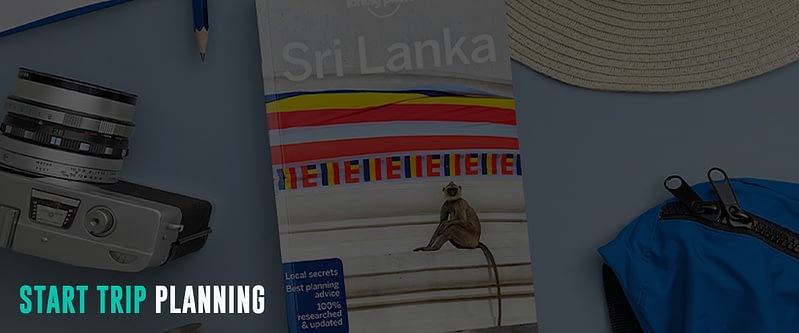
Travel-Wise is made from the ground up to help people travel more, break down the barriers that make it tough to get going, and start your journey as painlessly as possible. Bookmark our other Country Guides to help kick-start your research for future travels. We also offer templated itineraries from our staff and community that help serve as a building block for your trip plans. Alternatively, we also utilize AI to offer a way to generate itinerary ideas. This saves much time just getting you up and running with a template. From there, you can use the trip planner to create your customized itinerary, invite friends and family for collaboration, find others from Travel-Wise to join the trip, book and track important information, journal, and share your experiences at the end or along the way!

